Theoretical and Computational Biophysics Workshops, Summer 2009
To guide cell biology research and explain observation through molecular structures and sequence data, life scientists resort increasingly to computational tools. Sequence and structure viewers (Visual Molecular Dynamics - VMD) combined with molecular dynamics modeling software (Nanoscale Molecular Dynamics - NAMD) are primary methodologies that guide modern biomedicine. However, traditional university training has not kept up with the pace of developments in computational biology, creating a need for training that provides direct experience with physical models and computational approaches used for the simulation of biological systems. Adding to its roster of highly-rated workshops, the Theoretical and Computational Biophysics Group (TCBG), sponsored two week-long workshops in July and August 2009, providing hands-on experience in using computational biology software (e.g., VMD and NAMD) to to stretch proteins, pull water through molecular channels, mine genomic data, and study biomolecules. Further, TCBG participated in a workshop organized by the Center for the Physics of Living Cells in July-August 2009, which provided a mini-course on basic softwares for computational biology along with intensive training in use of the software. More about each workshop event can be found below.
'Hands-on' Workshop on Computational Biophysics, July 6-10, 2009
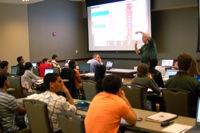 |
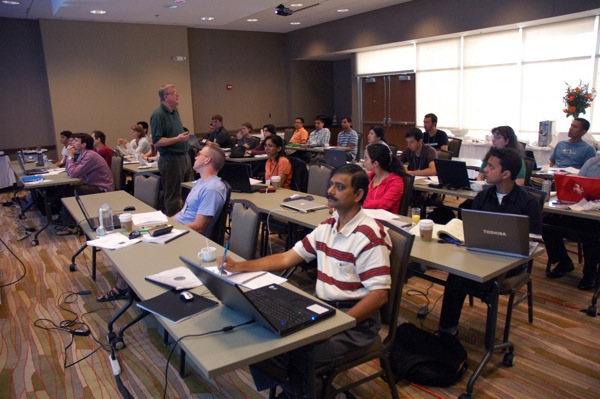 |
||
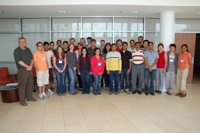 |
|||
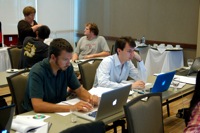 |
Held at the iHotel and Conference Center in Champaign, Illinois, the July 6-10, 2009 workshop provided 23 participants with morning lectures and afternoon tutorials. Selected from over 100 applicants, nearly all participants already had obtained doctoral degrees, and represented educational and non-profit institutions from the United States and abroad. Morning lecture topics included areas such as using VMD for structure building and dynamics analysis, molecular dynamics with NAMD, introduction to topology, parameters and structure files, transport in aquaporins, and an introduction to evolutionary concepts in bioinformatics. Afternoon tutorial sessions utilized participant's own laptops, that they prepared in advance of the workshop with needed software and tutorial files. With assistance from TCBG graduate students and postdoctoral associates, participants had the opportunity to work through over 500 pages of tutorial materials, learning along the way how to apply software and methods to their own favorite molecules. Evaluation results indicate the workshop was productive for participants, as all participants agreed that the workshop met their expectations, 95% felt the workshop addressed their research needs, and 90% indicated the workshop broadened their understanding of concepts and principles in the field of computational and theoretical biophysics.
Physics of the Living Cells Summer School, July 26 - August 1, 2009
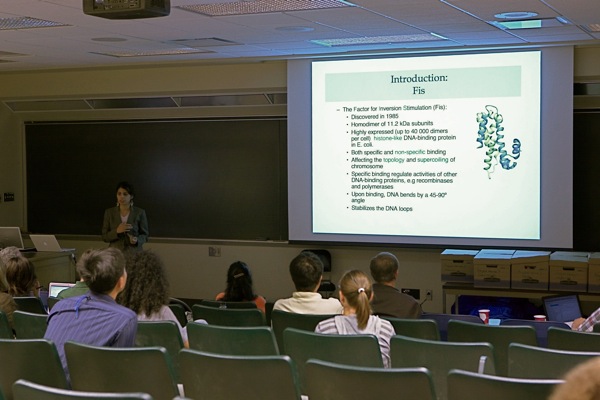 |
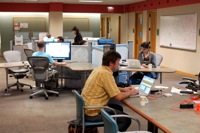 |
||
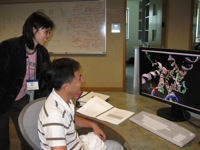 |
|||
|
|
Funded by the National Science Foundation Physics Frontier Center program, the Center for the Physics of Living Cells (CPLC) at the University of Illinois at Urbana-Champaign (UIUC) includes as part of its mission the goal of advancing the teaching of biological physics in both the physics and biological communities, using the CPLC as a focal point. In line with that mission, the CPLC conducted a workshop from July 26 - August 1, 2009 on the UIUC campus, with a five-day program that included TCBG faculty and students for training in computational biophysics using VMD and NAMD. Participants in the computational biophysics segment were provided with a two-day mini-course on basic softwares for computational biology as applicable to the physics of living cells, followed by a three-day intensive training segment focusing on participant-selected topics, with one-on-one tutoring from TCBG members for their investigation.
'Hands-on' Workshop on Computational Biophysics, August 10-14, 2009
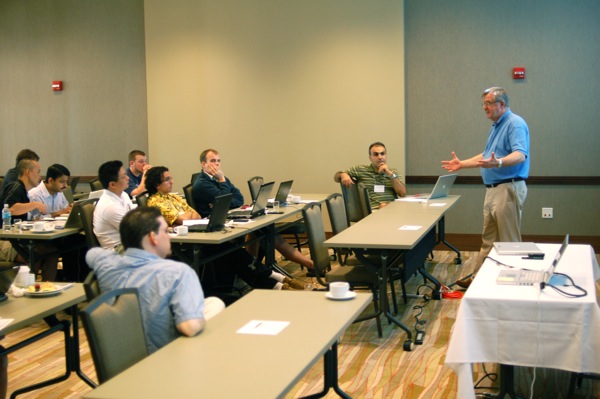 |
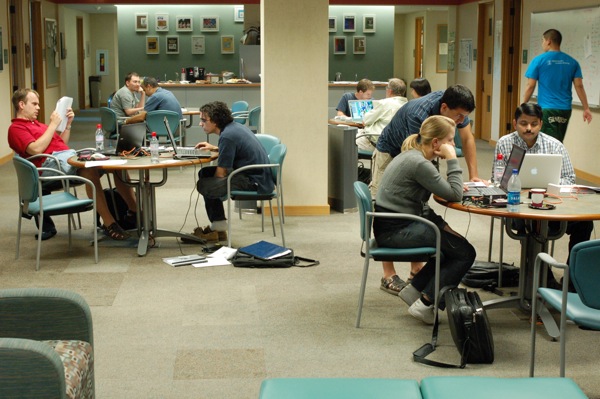 |
||
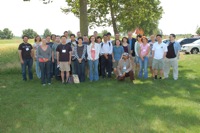 |
|||
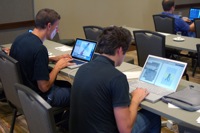 |
More text here
Comments from Visitors
"I have visited many research installations in the US and abroad, and the TCBG Visitor Center and office areas are in a class by themselves. In addition to the superb computer equipment, the layout, furniture and general atmosphere of the space are perfect for interaction with colleagues in addition to getting one's own work done. "
John Stack
Associate Head for Graduate Programs
Department of Physics
University of Illinois
"If one comes as a visitor to a group, it feels good to have a place that looks like one has put some thought into making room for a visitor and not like getting put into some random office that just happens to have a screen and an empty chair." (comment about the Visitor Center)
"A breath of fresh air . . . TCBG [the Resource] has - in my opinion - been liberated from the 'curse of the cubicles' and gained an important centerpoint of the group efforts . . .This is a step in the right direction. Research is based on communication and particularly in larger groups with diverse group members." (comment about the redesigned office areas)
Axel Kohlmeyer
Associate Director
Center for Molecular Modeling
University of Pennsylvania



